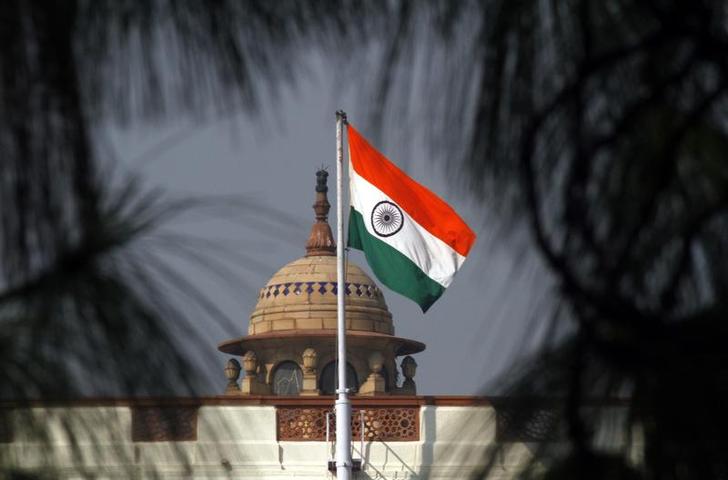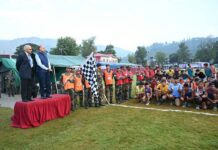An article on a news portal that described in great detail as to how retired bureaucrats had cornered cushy sinecures on boards of blue-chip companies they had once regulated triggered a think on a more rudimentary question. Has the time come to abolish the Indian Administrative Service, Indian Foreign Service, Indian Police Service, Indian Information Service and a myriad other such organisations that form the alleged “steel frame” of India’s governance structure?
The Union Public Service Commission conducts a combined examination to recruit candidates to all three India services, 16 Group A services and five Group B services. In addition to this the Staff Selection Commission of the Government of India carries out recruitment for what are colloquially called Group B, C, and D posts. The states mirror this structure with their respective public service and State Selection Commissions. The paramilitary structures have their own recruitment paradigms. On paper all this looks very impressive but in reality how does this play out on the ground?
India has a population of 121 crore people as per the census conducted in 2011. The rural-urban distribution is 68.84 per cent and 31.16 per cent respectively. Of the 121 crore Indians, 83.3 crore live in rural areas while 37.7 crore stay in urban areas. For a substantive bulk of these 83 crore odd people living in the countryside their interaction with the Indian state is primarily with a patwari, at best a kanugo, and rarely a tehsildar on the civil or revenue side. It is also called diwani administration in Urdu or Hindustani. On the law and order or criminal side the bulk of the interface of these people is with either a beat constable, police havaldar or at best an assistant sub-inspector in charge of a thana (police station). It is also called faujdari administration in Urdu or Hindustani.
Even after seven decades of Independence whenever the Indian state comes in contact with the people it is not a pleasant experience to put it mildly. It is an oppressively tyrannical, usually extractive and a mendacious occurrence. If you happen to live in Jammu and Kashmir, Northeast or Maoist-affected areas, especially those that are declared as disturbed areas and come within the purview of the Armed Forces (Special Powers) Act (AFSPA), then maybe the only face of the Indian state you would encounter would be one wearing olive green or khaki carrying an AK-47 kicking down your front door and perhaps your posterior after that.
The situation is no different in the urban areas with the interaction of a bulk of the 31.16 per cent of the people being confined to rent-seeking municipal authorities and an equally repressive police apparatus. The only saving grace being that people are more easily able to access the instruments of grievance redressal and despite the current pet performing poodle status of a substantive bulk of its stakeholders, the media has played generally a vigilante role in highlighting police atrocities and state high-handedness against citizens.
There may be a mitigating factor in terms of public hospitals, primary health centres and government-run educational institutions that poor citizens can access either for free or at a subsidised charge but even there the quality of service leaves much to be desired. Most of the other government-run public delivery services are afflicted with the same rent-seeking malady the most notorious being the ration shops and government-owned petrol pumps and gas agencies.
What is the solution to this problem? One remedy that the political right suggests is privatisation of public services. From the late 1970s to the great economic meltdown in 2008 the world witnessed the privatisation of public services from sewage to railways as the state withdrew from its role. This phenomenon acquired a new impetus after the collapse of the Soviet-led command economic model in 1989. However, this is a model unsuited for India insofar as delivery of public goods is concerned. Where do we then go from here?
There is only one-way bottoms-up administrative reform. Since Independence the government has set up two administrative commissions, the first on January 5, 1966 under the chairpersonship of Morarji Desai. It had an expansive 10-point remit: the machinery of the Government of India and its procedures or work; the machinery for planning at all levels; Centre-state relationships; financial administration; personnel administration; economic administration; administration at the state level; district administration; agricultural administration and problems of redress of citizens grievances.
A second administrative commission was constituted on August 31, 2005 under the chairpersonship of Veerappa Moily. It also had a capacious 13-point mandate. Organisational structure of the Government of India; ethics in governance; refurbishing of personnel administration; strengthening of financial management systems; steps to ensure effective administration at the state level; steps to ensure effective district administration; local self-government/panchayati raj institutions; social capital, trust and participative public service delivery; citizen-centric administration; promoting e-governance; issues of federal polity; crisis management and public order.
Both commissions submitted voluminous tomes as reports. However, the bureaucracy led by the Indian Administrative Service buried both these reports 10 fathoms deep and ensured that nothing would come of it. Even the political executive came up short in seizing the moment and dismantling the colonial era structures of the Mai-Baap sarkar that was put in place by the British to oppress the natives, extract revenue and terrorise them into accepting the over lordship of the imperialists.
The IAS founded in 1858 as the Indian Imperial Service has remained largely unchanged in its disposition. After Independence we have added on a host of other such structures. The time has come to dismantle all of them lock, stock and barrel as they are way past their expiry date. For all the loud protestations that would be articulated that the alleged “steel frame” saves the country from the vagaries of mercurial if not unhinged politicians the counter is simple — Prime Minister Nehru handpicked India’s best diplomats when there was no Foreign Service.
~ News4masses is now also on Google news
~ If you want to contribute an article / story, please get in touch at: news4masses[at]gmail[dot]com



















